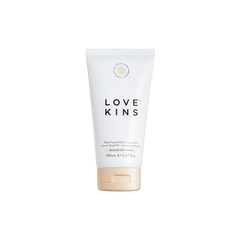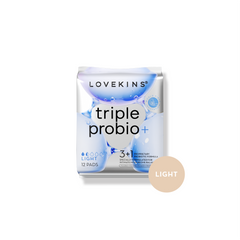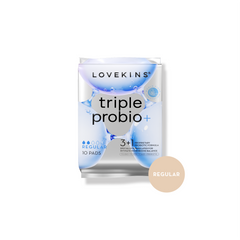“It just feels right, somehow.”
Many of our customers have mentioned to us that when they use our natural skincare products on their babies, it just feels right. They find it hard to put into words, but say it feels instinctive somehow. It helps them feel they’re doing a good job as a mum.
And we think this is because it is instinctive. Mothers (and grandmothers and aunties) have been applying natural ointments and balms to their babies and children for millennia.
Ancient customs; instinctive touch
Because, although the interest in natural skincare might seem new, skincare for babies and young children is not a modern phenomenon. And it’s certainly not just a middle-class trend. It’s grounded in ancient daily rituals and wisdom.
It’s fascinating to think that every traditional culture over the millennia has rituals around bathing and moisturising babies. For thousands of years, it’s been a form of bonding, calming, soothing and strengthening.

Traditional cultures used various oils and ointments for religious anointing, massaging, and for hydrating and protecting babies’ delicate skin from the harsh environment.
In many cultures, bathing was a compulsory ritual, often associated with religious cleanliness. On a practical level, it was a vital part of hygiene and disease prevention, which makes sense considering the high infant mortality rate.
Bathing and baby massage was often the role of the grandmother or aunties, especially in the first post-natal weeks when the mother was encouraged to rest and recuperate her strength.
Skincare oils & moisturisers used in different countries through the ages
What did these mothers (and grandmothers and aunties) use? Usually, it was a form of vegetable oil, often with botanicals such as local herbs or spices (think chamomile or turmeric.)
Indian mothers: the Ayurvedic tradition placed bathing and massage high on the priorities of baby care. The oils used for babies varied from region to region, but a popular one was sesame oil, and of course, the ubiquitous coconut oil. In Nepal, many mothers still use mustard oil in baby massage.
Greek mothers: Olive oil was used in many ways, to massage, to hydrate and soften the skin and to anoint in religious ceremonies. Some historical reports also mention honey mixed with olive oil. We now know that honey (used in a number of Lovekins products) has wonderfully soothing and healing properties.

The Romans, famous for their elaborate public bathing rituals, are reported to add lavender to their bathwater – as well as to their beds, clothes, and hair.
(Interestingly, lavender is one of the most popular essential oils across the ancient world and is used in all our Lovekins range. The Chinese used it as medicinal oil. The Europeans used it for centuries as a way to rid young children of worms, lice, and fleas. Various historical reports mention its use in embalming corpses, taming lions and tigers and repelling mosquitoes. According to research from North Carolina State University, ancient medicinal uses for lavender include treatment of headache, hysteria, nervous palpitations, hoarseness, palsy, toothaches, sore joints, apoplexy, colic, coughs, and digestive systems.)
Ancient Egyptians were among the first to use chamomile, which features in many Lovekins products. Fragments of chamomile were found in excavated Egyptian tombs; while hieroglyphics show that wealthy Egyptian women used the crushed flowers on their skin. Egyptian mothers would have used it to soothe and cool and added it to shampoos and lotions. They also used it as medicine for its deeply calming effects.
Middle Eastern mums: For centuries, mothers have used chamomile to calm crying children and soothe digestive problems. In western Arabia, this is still a valued natural remedy. Use the essential oil of Roman chamomile, Chamaemelum Nobile, in an herbal compress made by placing one drop of essential oil in a bowl of warm water and soaking a folded piece of cotton flannel in the liquid before applying it to the abdominal area.
Across South East Asia, mothers used coconut oil to massage their babies, often followed by a compress (a softball of medicinal herbs). In Malaysia, they used a compress with herbs such as turmeric, lemongrass, kaffir lime, camphor tree, tamarind and ginger. Balinese mums used a “boreh” – a paste made from local ingredients such as rice, cloves, ginger, cinnamon and turmeric.
Indonesians loved using ylang ylang (also used in Lovekins skincare), both as moisturiser and massage oil. The ylang-ylang tree is native to Indonesia and the Philippines, and it was prized for its relaxing and soothing effects. Some reports say it was given to mothers after childbirth as a tonic in the form of tea.
Phoenicians (including Morocco): Argan oil – now experiencing a resurgence in western skincare products – was used to massage, hydrate and protect babies’ skin; and as a hair conditioner. Adults also used rhassoul—a brown clay from the Atlas mountains.
African mothers often used shea butter as a moisturiser, along with coconut oil.
Tahitian babies are lucky enough to benefit from “monoi” – a uniquely Tahitian oil that’s not actually from a monoi plant but is made by soaking the petals of gardenias in coconut oil. Priests used it to bless newborn babies.
Lovekins natural baby skincare uses many of these ancient ingredients, including coconut oil, honey, sweet almond oil, chamomile, lavender and ylang ylang.













